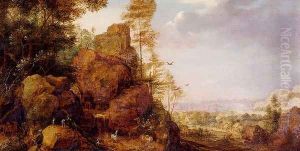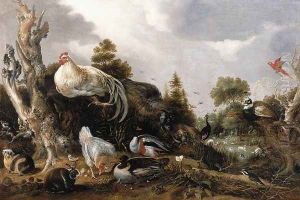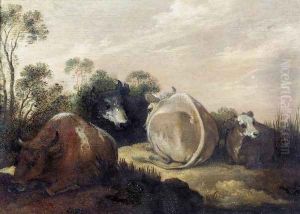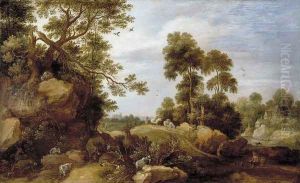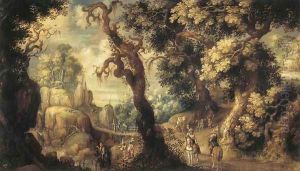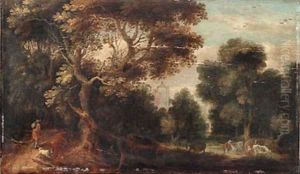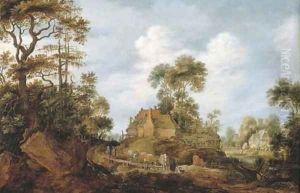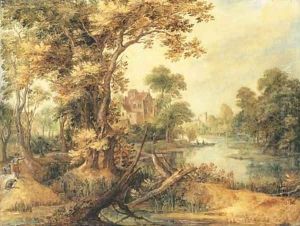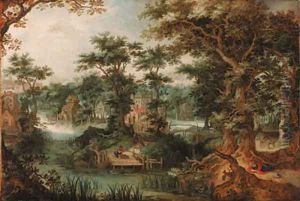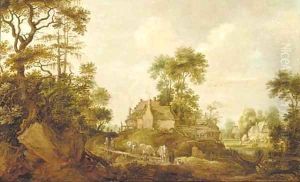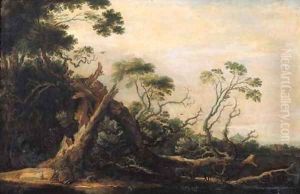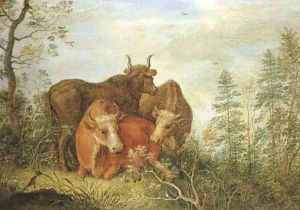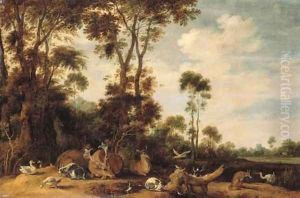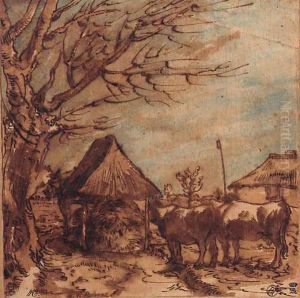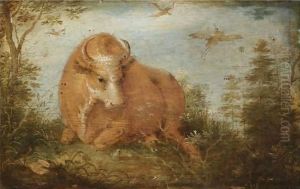Gillis Claesz. De Hondecoeter Paintings
Gillis Claesz. de Hondecoeter was a Dutch painter active during the late 16th and early 17th centuries, known particularly for his contributions to the genres of landscape and animal painting. Born around 1575 in Antwerp, then part of the Spanish Netherlands, de Hondecoeter came from a family of artists that significantly influenced his career path. His father, Nicolaes Jansz de Hondecoeter, was also a painter, and it is believed that Gillis received his early training in the art from him.
De Hondecoeter moved to Amsterdam in the early 1600s, where he became an integral part of the city's burgeoning art scene. During this period, Amsterdam was experiencing a Golden Age, marked by economic prosperity and a booming art market. Gillis Claesz. de Hondecoeter's work reflected the era's fascination with the natural world, as he specialized in landscapes, seascapes, and particularly scenes involving animals. His paintings are characterized by meticulous attention to detail and a keen observation of nature, qualities that made his work highly sought after by patrons.
While not as widely recognized today as some of his contemporaries, such as Rembrandt or Vermeer, de Hondecoeter played a significant role in the development of Dutch landscape and animal painting. His compositions often featured domestic and wild animals within idyllic, Arcadian landscapes, a theme that would influence generations of artists, including his nephew Melchior de Hondecoeter, who became famous for his ornate bird scenes.
Gillis Claesz. de Hondecoeter's contributions to the Dutch Golden Age of painting were significant, yet much of his life remains shrouded in mystery, with few documented records of his personal life. He passed away in Amsterdam in 1638, leaving behind a body of work that continues to be appreciated for its artistic value and its historical significance in the evolution of European art. His legacy is preserved in various collections and museums, where his paintings offer a window into the natural and artistic splendors of his time.
